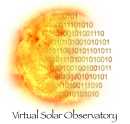| Version 1 (modified by joe, 11 years ago) (diff) |
|---|
(this is a snapshot of the AuthorChecklist from 2015/Apr/23, as I'm going to edit that one so it's more cronological)
Checklist for Authors of Science Articles in Solar Physics
TODO: clarify which of these apply to raw data vs. intermediary data vs. final results / published data. Also, try to clean this up so it's more cronological : (1) where you got the data from, (2) how you reduced the data, (3) other processing applied.
Background:
- AGU Town Hall on Data Citation
- "How to Cite a Data Set" from IPY
- "Catalog Checklist" (for people publishing catalogs)
- AGU Data Policy
Goal :
Ensure that research is reproducable.
Secondary goal:
Provide attribution for the data/archives, and software or other tools, so they can justify their continued funding.
Policy :
- Data used in articles should be made publicly available.
- If the data is not already available from an archive, it should be included as a supplement to the article.
- Observations should be sufficiently described to allow reviewers or other scientists to easily verify the article's claims.
Checklist for Submitters:
- Have I described the data that was used in this research?
- In terms of the instrument / observatory / observatory group used?
- And the specific dataset that was used? (eg, used the PI provided Level 2 data vs. the L0 data that you processed yourself)
- In terms of the instrument / observatory / observatory group used?
Note : working on recommendations for data providers to provide consistent names or identifiers to each dataset.
- In terms of day/time being analyzed?
- In terms of location being analyzed (if not 'full disk')
- In terms of any subsetting done of the data?
- If using a lower cadence than the original data:
- What cadence was used ('1 per minute' vs. '1 per day')
- How the cadence aligned (eg, '1 per day, first image after midnight UT' vs. '1 per day, closest to local solar noon')
- If using only a specific observing mode or filter:
- 'total brightness' vs. 'polarized brightness' for instruments such as SECCHI/COR2
- Specific wavelengths from SOHO/EIT, STEREO/SECCHI/EUVI, SDO/AIA, etc.
- AEC vs. non AEC for SDO/AIA.
- If using cutouts from the original data
- eg, "200 arcsec patch centered on AR10943" vs. "200 arcsec wide by 400 arcsec high centered on ... xSun, ySun" -
- If using a lower cadence than the original data:
‘... at 400 xSun,-600 ySun’ ; ‘... at 45W60N’
- If using reduced resolution images
- The size of the resulting images, and how it was reduced.
- '1024x1024 images, 4x4 binned' vs. '2048x2048 images, sampled using the lower left'
- In terms of where I obtained it from (from which archive, at what time)
- Specified which specific version of the data you used, if the archive provides more than one.
- eg, 'daily movies' vs. 'level 0 FITS files' vs. 'level 1 JPEGs'
- Specified which specific version of the data you used, if the archive provides more than one.
- Have I described the processing that I did to the data for analysis?
- Have I acknowledged software and tools used ...
- to find & obtain data (HEK, VSO, EGSO, AstroGrid, Solar Monitor, etc.)
- to visualize data (Helioviewer, JHelioviewer, SolarWeather Browser, etc.)
- to process the data (SolarSoft, PDL, SunPy, IRAF, etc.)
- If there were models or catalogs used:
- Have I provided a reference to the article in which they were introduced?
- If discussing specific events:
- Have I given the time and coordinate of the event(s)?
- Have I provided an identifier for the event(s)?
- Is the data available for others to review?
- Is the data available from an archive online, or have I included it for submission as a suplement to the article
- If I have significantly processed the data, have I included my data for submission as a suplement to the article?
